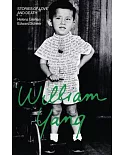Canada’s history is bicultural, Indigenous, and multilingual, and these characteristics have given risen to a number of strategies used by our writers to code racially mixed characters. This
book examines contemporary Canadian literature and drama in order to tease out some of those strategies and the social and cultural factors that inform them. Racially hybrid characters in
literature have served a matrix of needs. They are used as shorthand for interracial desire, signifiers of taboo love, images of impurity, symbols of degeneration, and examples of beauty and
genetic perfection. Their fates have been used to suggest the futility of marrying across racial lines, or the revelation of their “one drop” signals a climactic downfall. Other narratives
suggest mixed-race bodies are foundational to colonization and signify contact between colonial and Indigenous bodies. Author Michelle LaFlamme approaches racial hybridity with a cross-generic
and cross-racial approach, unusual in the field of hybridity studies, by analyzing characters with different racial mixes in autobiographies, fiction, and drama. Her analysis privileges
literary texts and the voices of artists rather than sociological explanations of the mixed-race experience. The book suggests that the hyper-visualization of mixed-race bodies in mono-racial
contexts creates a scopophilic interest in how those bodies look and perform race.La Flamme’s term “soma text” draws attention to the constructed, performative aspects of this form of
embodiment. The writers she examines witness that living in a racially hybrid and ambiguous body is a complex engagement that involves reading and decoding the body in sophisticated ways,
involving both the multiracial body and the racialized gaze of the onlooker.





















